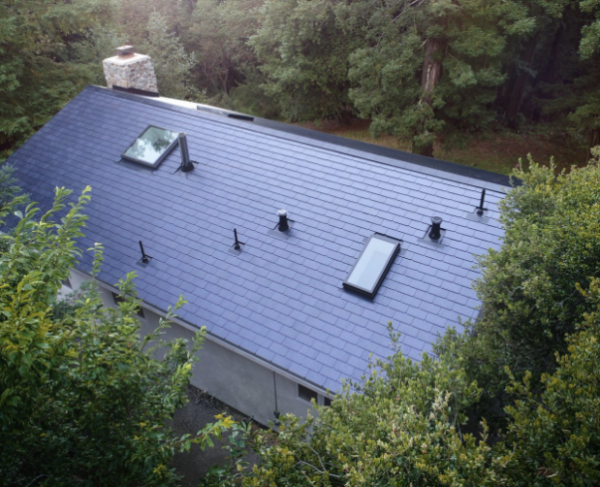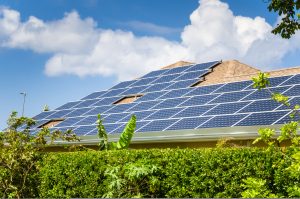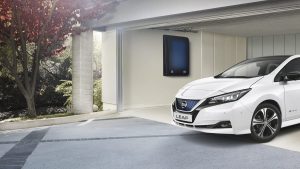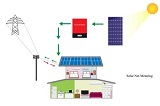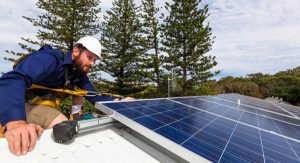It’s official; the first Tesla Solar roof has just been installed, and visually it looks pretty amazing. However, the big question many people are asking is, how is a glass solar panel going to help keep my house warm in winter and cool in summer?
 No Photoshop here – the first Tesla Solar Roof – photo courtesy of Tesla
No Photoshop here – the first Tesla Solar Roof – photo courtesy of Tesla
All traditional roofing materials in Canada, whether aluminum, shingles, tiles, slate, or wood shakes, are manufactured with certain reflective properties. The more the roofing material can reflect the heat away from the building, the less heat is being transferred into the roof space. If the roofing material is not able to reflect the heat efficiently, the heat is readily transferred into the roof space resulting in higher household energy costs.
As the new Tesla Solar Roof cells are encapsulated into tempered glass (not the most heat reflective material) and are installed directly on the roof surface, it would be a likely consequence that the thermal heat transfer into a building’s roof space will be increased.
However, Tesla SEO Elon Musk has been vocal about the Tesla Solar Roof’s superior durability and higher insulating value than a standard roof tile, but he has not been clear about just how this will work.
Just prior to the first solar roof installation, Tesla received a Class A certification from Underwriter Laboratories which classified the Tesla Solar Roof as having superior fire performance, hail resistance and resistance to wind uplift.
As part of the Solar Roof certification, Tesla is required to install the Solar Roof tiles over a minimum of 15/32-in. thick plywood roof deck and a minimum 1/4-in. thick Georgia-Pacific Gypsum LLC DensDeck® Roofboard. Although this doesn’t explain how the Solar Roof tiles themselves have insulating or heat reflecting properties, this thermal barrier is key to reducing heat transfer into the property’s roof space and preventing heat from escaping through the solar tiles.
 Example of DensDeck Roof Board Application
Example of DensDeck Roof Board Application
The next question that is on many solar installers minds is – without airflow around Solar Roof tiles, how are they kept cool to ensure maximum efficiency?
Solar panels start losing their efficiency as the ambient temperatures rise above 77°F/25°C (one of the Standard Testing Conditions). Generally, solar panels are installed on racks a few inches above the roof surface allowing for air to circulate around the solar panel. This cools the solar panels, keeping them efficient and reduces excess heat from penetrating into the roof space.
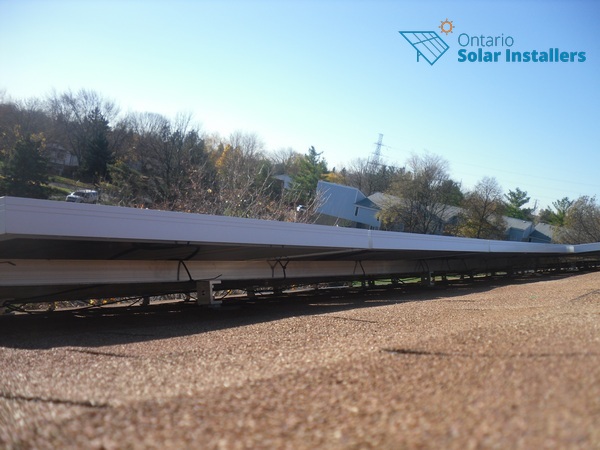
Solar panels are typically installed 4-6″ off the roof to allow for air circulation. Without this space between the roof surface and the solar panel, it is unclear how Tesla plans to negate the loss of efficiency from the heat being retained by the Solar Roof tiles. At this stage, Elon Musk has not made public the full Solar Roof panel warranty and specification details.
Maybe Tesla has adjusted output calculations for the Solar Roof panel temperature efficiency levels knowing they may be performing under less than efficient conditions? Or perhaps, they haven’t bothered to address this issue at all as they are aware the panel output will be less efficient than a racked solar panel operating under the same conditions.
 Tesla Solar Roof – photo courtesy of Tesla
Tesla Solar Roof – photo courtesy of Tesla
As much as the Tesla Solar Roof is advancing solar power technology, and they are certainly aesthetically beautiful, there are still questions being asked that need answers. I guess we are going to find soon when the Tesla Solar Roof becomes available in Canada!


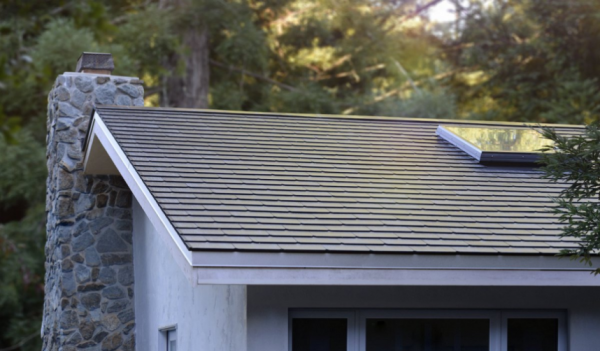 No Photoshop here – the first Tesla Solar Roof – photo courtesy of Tesla
No Photoshop here – the first Tesla Solar Roof – photo courtesy of Tesla Example of DensDeck Roof Board Application
Example of DensDeck Roof Board Application